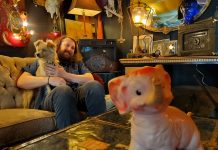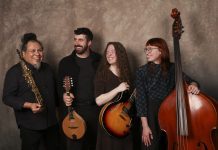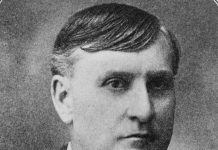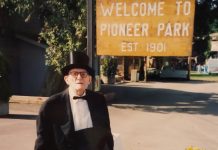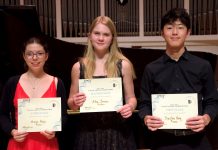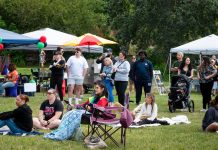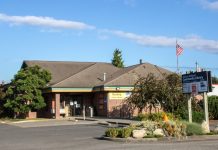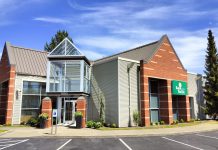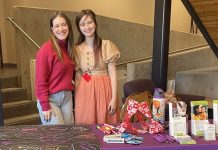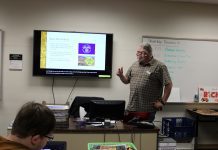As I write this, it’s the day after the 2020 Grammy Awards ceremony. With music on my mind, I was excited to sit down with Cheryl Hodge, who has won a number of awards in the music community for previous contributions. Having had numerous chart-topping and award-winning jazz songs, she’s quite down-to-earth and comforting.
Hodge has been making music and teaching people how to sing for more than 30 years. She previously taught at Boston’s Berklee College of Music where she had many successful students (Grammy winner Paula Cole being one). After moving to Bellingham, Hodge continued to make music and teach voice lessons. Because of her knowledge and understanding of music, a Western Washington University professor recruited her to work with his wife, who had late stage Alzheimer’s.
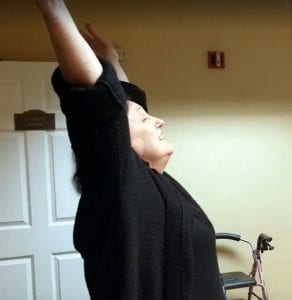
Hodge saw the power of music during this experience and developed the Dementia Singalong Therapy Program. The program includes stretching, breathing exercises, singing exercises, singing songs, and sharing personal stories brought up from singing certain songs. The concept is largely based on Bloom’s Taxonomy, which classifies learning into three domains: cognitive (thinking), affective (emotion/feeling), and psychomotor (physical/kinesthetic). The goal is to encourage higher-order thought (critical thinking) by building up from lower-level cognitive skills (remembering, understanding and applying).
The program’s ultimate goals are to give “choir students” a sense of purpose, improve their communication skills, increase interpersonal connections, and inspire others to become more interactive with those suffering from dementia and memory issues, which may otherwise lead to loneliness and boredom.
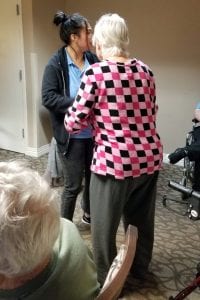
During the Summer of 2019, Hodge took her singalong therapy on the road for its second cross-country “Dementia Singalong Awareness Tour,” visiting memory care facilities in Idaho, Montana, and Wisconsin.
Charles Harriman is the Lifestyle Director from The Bellingham At Orchard, (TBAO) a memory care residence where Hodge conducts two choirs. Harriman works with a group of memory care residents who play piano, drums, and other instruments. The band is fronted by six of the facility’s strongest singers. “I lead the band, but they support each other,” he says. He also leads dance and other movement classes throughout the week.
“There’s at least a 30-60 minute period where people are more coherent after singing, and that increases over time,” says Hodge. “When you marry cognitive, which is the knowledge part, to psychomotor, which is motor mechanisms, you get those things exchanging. Then the brain gets excited—and you let it build new (neural) connections.”
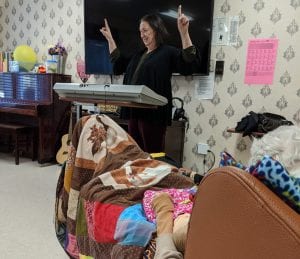
Hodge works with five different memory choirs in Whatcom County. This past December, she produced a combined choir concert at the Mount Baker Theater Encore Room with three of her memory choirs: TBAO, Rosewood Villa and Brookdale Fairhaven. A short video of an earlier combined concert can be viewed here.
I shadowed her one afternoon while she worked with two memory choirs at TBAO. About two dozen residents were already warmed up and singing when I arrived. A couple was seated in front of me. The woman was very fashionable, with two pink fascinators in her carefully coiffed hair. She was singing her heart out. The gentleman with her was not singing or reacting at all…until Hodge started playing the Valentine’s Day playlist. By the end of the song “Daisy (Bicycle Built for Two)” he was smiling directly at his companion, and then remained engaged for the rest of the rehearsal.
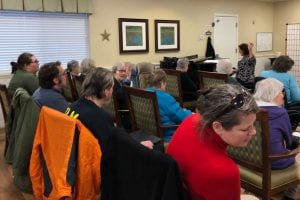
We went over to a larger room for the second rehearsal of the afternoon. There were a few people who wheeled or walked over from the first. Hodge began with warmups, just like you would have in any singing practice or performance. There was proper breathing posture, raising their arms and stretching, loosening their jaws, and practicing making tonal noises, all similar to the first part of this video recorded in a class lesson a few years ago. The caregivers were all joining in while keeping a careful eye on their charges.
I was moved to tears when I noticed one person—who had been wheeled into the room by a caregiver, seemingly non-responsive—suddenly clap appropriately during “Down By The Riverside,” and then sing and wave his hands during a rousing verse of “You’re a Grand Old Flag.”
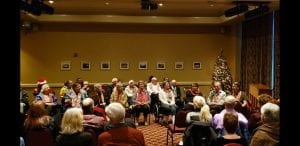
Along with her memory choirs mentioned above, Hodge also works with memory care residents at Pegasus at Cordata, Christian Healthcare Center‘s Cedar Cove, and Lynden Manor. She is available to give workshops to caregivers, and lead additional memory choirs.
You can reach her through her Dementia Singalong Therapy Program website and access additional materials there. She recorded “To Walk in My Shoes (Dementia Blues)” to help raise funds for Dementia Singalong Therapy, which received its Federal Charity 501 (C) (3) designation, allowing Hodge to accept donations. All funds are used for community and national projects, tours, and training programs.

